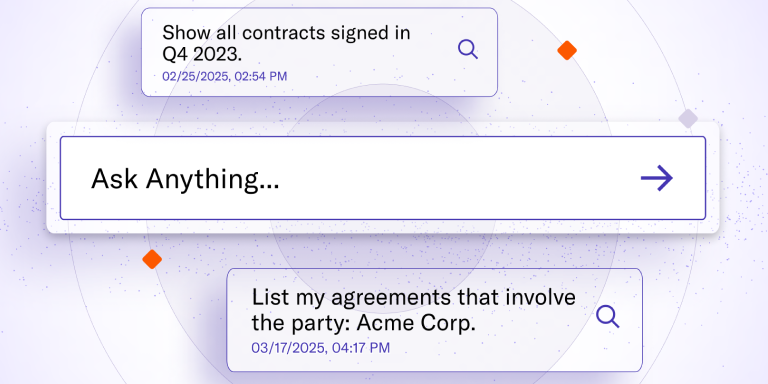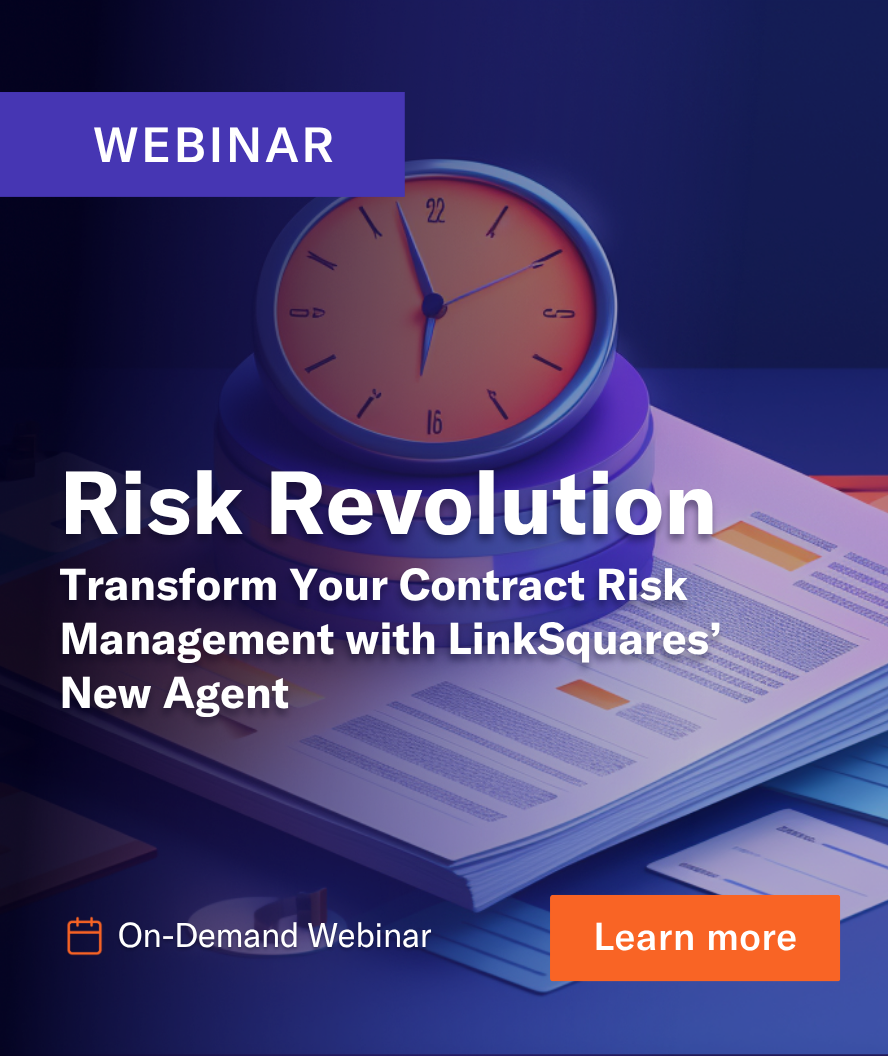Generative AI tools like ChatGPT, Claude, and Gemini have the potential to dramatically boost productivity -- even for highly specialized professionals like legal and contract operations teams. But the value you get from AI depends on how clearly you communicate with it.
Writing effective prompts is a skill that helps you get more relevant, actionable, and high-quality results. Here are five key rules to help you get the most out of generative AI (genAI) tools, including LinkSquares generative AI.
1. Be clear, specific, and purposeful
Lawyers are trained not to be vague when crafting legal documents. The same rule applies to writing genAI prompts. The more clearly you describe what you want -- and why you want it -- the better the output will be. Avoid general questions and clearly define the task.
Instead of:
"Tell me about contract automation"
Try:
"Explain how contract automation reduces administrative workload for in-house legal teams in under 100 words."
Be sure to include the goal of the task so the AI understands how to tailor its response.
2. Provide context and define your audience
AI works best when it understands who it’s writing for and what role it should play. Let it know whether the content is meant for internal teams, external stakeholders, legal professionals, executives, or the United States Supreme Court (in which case you will absolutely want to triple-check the output).
Instead of:
"Summarize the benefits of contract lifecycle management software."
Try:
"Write a summary of the benefits of contract lifecycle management software for a CFO unfamiliar with legal tech, using a confident and persuasive tone."
3. Structure your request with format and tone in mind
Structure helps the AI deliver exactly what you need. Whether it’s a bulleted list, table, short paragraph, or email draft, be explicit about the desired format (especially if the court of jurisdiction has explicit style guidelines). Moreover, you'd use a much different tone when trying to elicit a concession than when terminating a contract for cause. The AI needs to know that, too.
Instead of:
"What are the pros and cons of using AI in legal departments?"
Try:
"Create a table with two columns -- ‘Benefit’ and ‘Risk’ -- listing three pros and three cons of using AI in legal departments. Write in a neutral, informative tone."
4. Break complex tasks into steps –– and iterate
For more complex requests, it’s better to guide the AI step-by-step rather than asking for everything at once. You can also treat your prompt as a conversation and refine the output over multiple follow-ups.
Start with:
"Draft three possible assignment clauses for a standard software-as-a-service master services agreement."
Then follow up with:
"Choose the clause with the most conservative approach to rights of assignment."
Finish with:
"Elaborate on the rights of assignment if and when the SaaS provider is sold to a new ownership group."
Treat AI as a collaborative assistant, not a one-and-done tool.
5. Test, refine, and build reusable templates
Prompt writing is a process. Even small tweaks in wording can lead to better results, so don’t be afraid to experiment. Over time, you can create prompt templates for tasks you do frequently.
Framework:
- TASK: [Summarize, Rewrite, Draft, Brainstorm, etc.]
- FORMAT: [Bullets, Table, Email, Memo, Contract Clause]
- CONTEXT: [Audience, tone, use case]
- CONTENT: [Insert content or request]
The more consistent your prompting strategy, the more consistent your AI results will be.
Prompt writing is an art, but you can still apply some science
Effective prompting isn’t about using arcane or technical language (sorry, lawyers) -- it’s about clear communication. With just a few simple rules, you can dramatically improve the quality of your AI-generated work and make these tools a reliable part of your daily workflow.
Want to see how legal and contract teams are using AI to work smarter? Contact LinkSquares today.

Subscribe to the LinkSquares Blog
Stay up to date on best practices for GCs and legal teams, current events, legal tech, and more.


